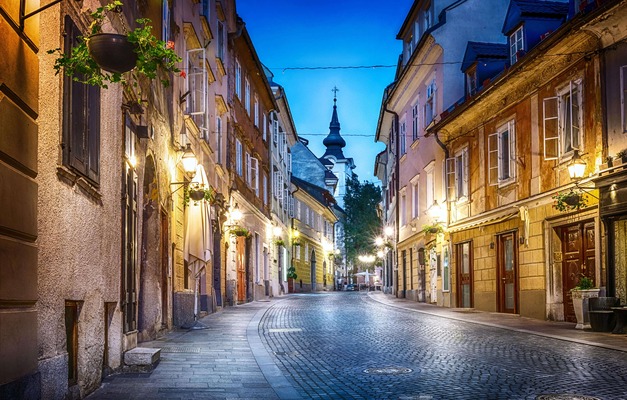
Alpine Enchantment: A Family Adventure Through Historic Cities & Scenic Landscapes
 14 Day Tour of Zurich, Interlaken, Munich, Salzburg and Vienna
14 Day Tour of Zurich, Interlaken, Munich, Salzburg and Vienna
Overview
Trip Map
Itinerary
Inclusions
Reviews







14 Days 13 Nights
Best Time: Jan-Dec
Families With Children
Nature Lovers
Experience Alpine Europe's breathtaking beauty and rich history with your family on this unforgettable journey through Switzerland, Germany, and Austria. Traverse the cobblestone streets of Zurich, Munich, Salzburg, & Vienna, marvel at the architectural splendor of Neuschwanstein Castle, and explore the picturesque Alpine lakes surrounding Interlaken. Enjoy private guided tours, detailed travel guidance through our mobile app, and plenty of opportunities for family-friendly adventures. From the enchanting Englischer Garten to the serene Lake Lucerne and magical Wachau Valley, every moment of this trip promises to create lasting memories.
- Ascend to the Jungfraujoch for breathtaking views, an ice palace, and thrilling Alpine experiences.
- Discover the fairy-tale Neuschwanstein Castle on an excursion into the Bavarian Alps.
- Ascend the Untersberg by a scenic cable car and dodge trick fountains in Hellbrunn Palace’s gardens.
- Wander through Munich’s beautiful English Garden, one of Europe’s largest urban parks.
- Enjoy a private guided walking tour of Vienna’s historic Inner City and visit its sumptuous palaces.
Experience Alpine Europe's breathtaking beauty and rich history with your family on this unforgettable journey through Switzerland, Germany, and Austria. Traverse the cobblestone streets of Zurich, Munich, Salzburg, & Vienna, marvel at the architectural splendor of Neuschwanstein Castle, and explore the picturesque Alpine lakes surrounding Interlaken. Enjoy private guided tours, detailed travel guidance through our mobile app, and plenty of opportunities for family-friendly adventures. From the enchanting Englischer Garten to the serene Lake Lucerne and magical Wachau Valley, every moment of this trip promises to create lasting memories.
- Ascend to the Jungfraujoch for breathtaking views, an ice palace, and thrilling Alpine experiences.
- Discover the fairy-tale Neuschwanstein Castle on an excursion into the Bavarian Alps.
- Ascend the Untersberg by a scenic cable car and dodge trick fountains in Hellbrunn Palace’s gardens.
- Wander through Munich’s beautiful English Garden, one of Europe’s largest urban parks.
- Enjoy a private guided walking tour of Vienna’s historic Inner City and visit its sumptuous palaces.

Fraumunster
Churches & Monasteries

Lake Zurich
Natural Beauty

Unterseen
Small Towns

Interlaken Monastery & Castle
Castles & Chateaux

Hohematte Park
Natural Beauty

Old Town
Architecture

Residence Palace
Castles & Chateaux

Hohensalzburg Fortress
Castles & Chateaux

Schönbrunn Palace & Zoo
Parks & Gardens
Must see sights

Fraumunster
Churches & Monasteries

Lake Zurich
Natural Beauty

Unterseen
Small Towns

Interlaken Monastery & Castle
Castles & Chateaux

Hohematte Park
Natural Beauty

Old Town
Architecture

Residence Palace
Castles & Chateaux

Hohensalzburg Fortress
Castles & Chateaux

Schönbrunn Palace & Zoo
Parks & Gardens
Starting from
$3775
per person
 Not included
Not included Secure Your Customizable Trip
Enter your details to embark on a journey that can be tailored just for you.
Start
Travelers
0 travelers
Add Room
Remove Room
Preferred Hotel Stars
Select Hotel Stars
Craft Your Own Itinerary
Select your interests and destinations for a trip plan inspired by you.
Enchanting Family Alps Trip - Map & Itinerary
Enable/Disable Map Scrolling
Click To Make Map Interactive

Enchanting Family Alps Trip Timeline
 Edit Details
Edit DetailsArrival
2 nights
Zurich
Switzerland
Train: 2h
2 nights
Interlaken
Switzerland
Train: 2h
Train: 4h
3 nights
Munich
Germany
Train: 1.5h
2 nights
Salzburg
Austria
Train: 2.5h
4 nights
Vienna
Austria
Departure
Day-By-Day Itinerary of Enchanting Family Alps Trip

Day 1
Arrive Zurich
Day 1
Arrive Zurich



To Be Determined
Zurich Airport Pickup
We will schedule a pick up for 20 minutes after your flight's arrival time. You will be met in the terminal by an English speaking driver holding a sign with your name on it. The ride is for your party only - you will not be sharing a vehicle. The cost of the ride will be included in your itinerary package.

Day 1
Arrive Zurich


Day 1
Arrive Zurich




To Be Determined:
Zurich Airport Pickup
Mid-Day/Afternoon:
West Bank, Self-Guided
Late Afternoon/Early Evening:
East Bank, Self Guided


Day 2
Zurich
Day 2
Zurich



Early Morning to Afternoon
Mt Pilatus
In summer months, you can ride the steepest rack-railway in the world at a gradient of nearly 48 percent from Alpnachstad up the giant mountain of Mt Pilatus that looms over the city of Lucerne. In winter you can glide up the other side of the mountain on a cable car from Kriens. The highest point, Tomlishorn, with superlative views of Lake Lucerne, is only 30min on foot from the hotels and restaurants near the top.

Kriens-Pilatus Cable Car Station
Show More
Show More


Kriens-Pilatus Cable Car Station
Show More
Show More


Kriens-Pilatus Cable Car Station
Show More
Show More


Kriens-Pilatus Cable Car Station
Show More
Show More


Kriens-Pilatus Cable Car Station
Show More
Show More

prev
next

Day 2
Zurich

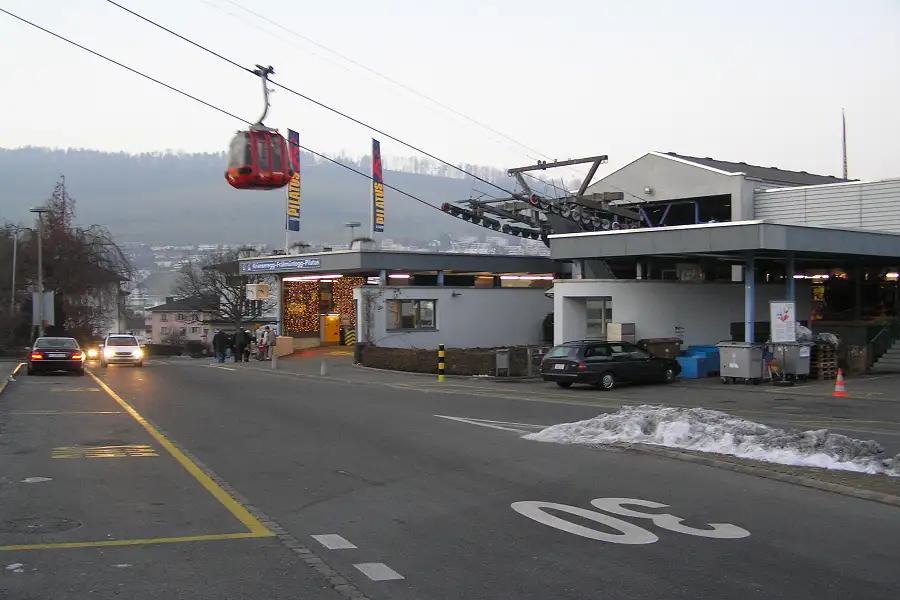
Kriens-Pilatus Cable Car Station
 Highlight of Mt Pilatus
Highlight of Mt Pilatus

Kriens-Pilatus Cable Car Station
 Highlight of Mt Pilatus
Highlight of Mt Pilatus

Kriens-Pilatus Cable Car Station
 Highlight of Mt Pilatus
Highlight of Mt Pilatus

Kriens-Pilatus Cable Car Station
 Highlight of Mt Pilatus
Highlight of Mt Pilatus

Kriens-Pilatus Cable Car Station
 Highlight of Mt Pilatus
Highlight of Mt Pilatus
prev
next

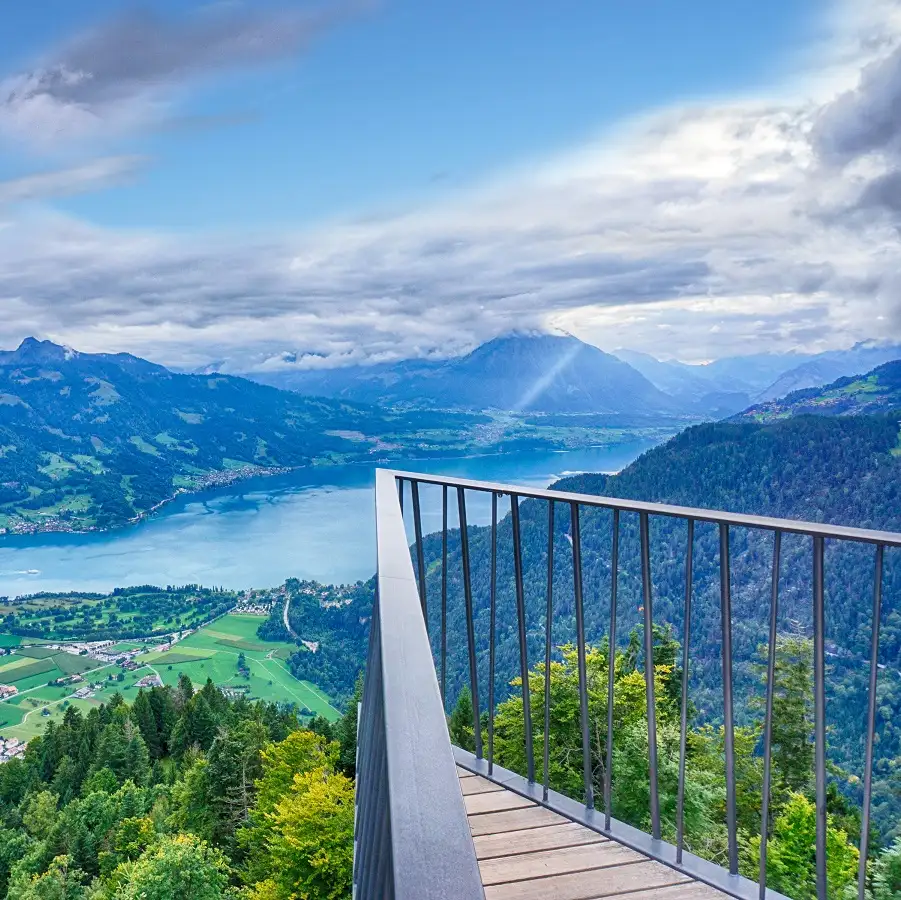
Day 3
Zurich to Interlaken
Day 3
Zurich to Interlaken




9:55 AM
Taxi to Zurich Rail Station
Zurich taxis are generally reliable and honest, so this is cheaper than a pre-arranged transfer. If you are picked up one hour prior to departure, you should have plenty of time to catch your train.

Day 3
Zurich to Interlaken



Day 4
Interlaken
Day 4
Interlaken


Early Morning to Late Afternoon
Jungfrau
Journey directly through the famous Eiger Mountain to what the Swiss called "The Top of Europe", the icy, windswept gap in the mountain ridges known as Jungfraujoch at 3,454m/11,332ft just below the summit of Jungfrau. The train ride to the top is not cheap, but it's the highest train station in Europe and definitely an unforgettable experience.

Grindelwald
Village in the Bernese Alps
Show More

Grindelwald
Village in the Bernese Alps
Show More

Grindelwald
Village in the Bernese Alps
Show More

Grindelwald
Village in the Bernese Alps
Show More

Grindelwald
Village in the Bernese Alps
Show More
prev
next

Day 4
Interlaken


Grindelwald
 Highlight of Jungfrau
Highlight of JungfrauVillage in the Bernese Alps
Village in the Bernese Alps that is considered to be the gateway to the Jungfrau Region. This village is popular among hikers and alpinists

Grindelwald
 Highlight of Jungfrau
Highlight of JungfrauVillage in the Bernese Alps
Village in the Bernese Alps that is considered to be the gateway to the Jungfrau Region. This village is popular among hikers and alpinists

Grindelwald
 Highlight of Jungfrau
Highlight of JungfrauVillage in the Bernese Alps
Village in the Bernese Alps that is considered to be the gateway to the Jungfrau Region. This village is popular among hikers and alpinists

Grindelwald
 Highlight of Jungfrau
Highlight of JungfrauVillage in the Bernese Alps
Village in the Bernese Alps that is considered to be the gateway to the Jungfrau Region. This village is popular among hikers and alpinists

Grindelwald
 Highlight of Jungfrau
Highlight of JungfrauVillage in the Bernese Alps
Village in the Bernese Alps that is considered to be the gateway to the Jungfrau Region. This village is popular among hikers and alpinists
prev
next


Day 5
Interlaken to Munich
Day 5
Interlaken to Munich




8:15 AM
Rail Dropoff, Self-Arrranged
Interlaken taxis are reliable and honest, so this is cheaper than a pre-arranged transfer. If you are picked up 45 minutes prior to departure, you should have plenty of time to catch your train.

Day 5
Interlaken to Munich


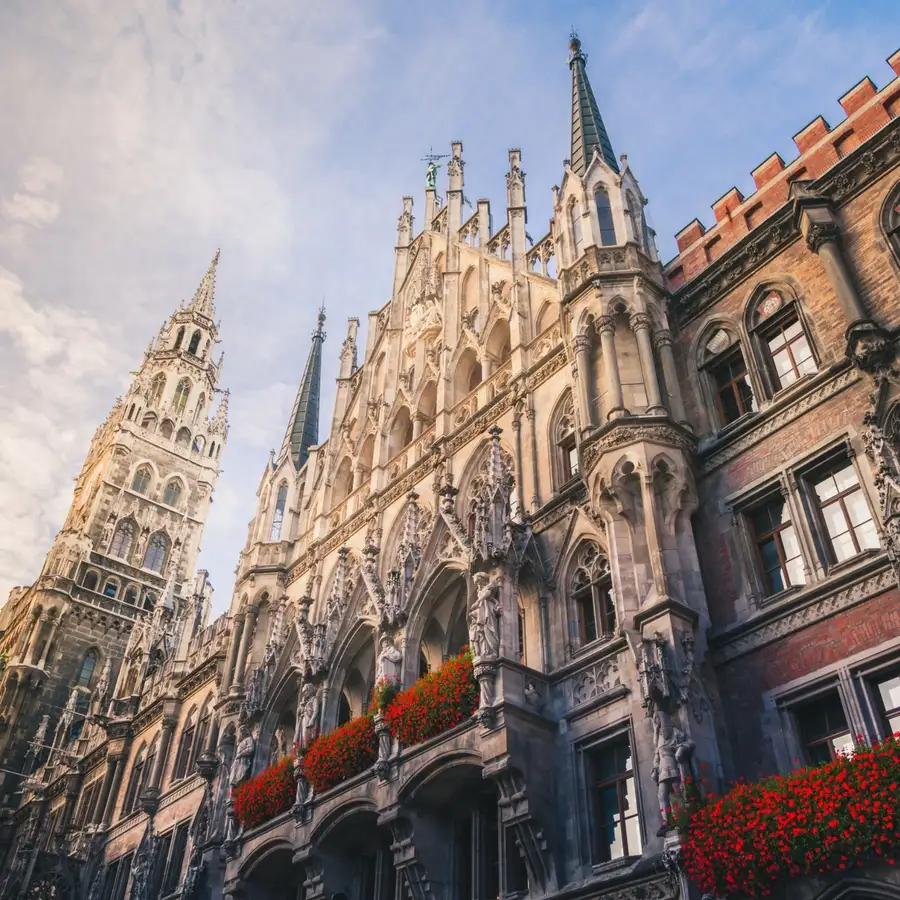
Day 6
Munich
Day 6
Munich


9:00 AM - 11:30 AM
Guided Walk Tour of Historic Munich
Munich contains many reminders of a long and varied history but also encompasses the modern features of a strong and vibrant city. The insights of a local help make sense of the traditions, trends, and promises of Bavaria's Capital - sometimes referred to as the city of laptops and lederhosen. On this tour, your guide will show you the highlights of Munich and point out the many hidden treasures.

Day 6
Munich



Day 7
Munich
Day 7
Munich



Morning/Mid-Day
Deutsches Museum
The Deutsches Museum (i.e., the German Museum) is the world's largest museum of science and technology. It is located on a small island in the River Isar, which flows through central Munich. The museum's vast and fascinating collection is spread out among 40 different exhibitions. You will encounter examples of technology stretching across humanity's long history, from a reproduction of pre-historic cave paintings to the laboratory where the atom was split.

Day 7
Munich



Day 8
Munich to Salzburg
Day 8
Munich to Salzburg





Morning/Mid-Day
BMW Museum & Olympiapark
If you have a passion for cars and German engineering precision, then you'll love the shrines to one of Germany's finest automobiles - the ultra-modern BMW Museum and the futuristic-looking BMW World. Adjacent to BMW World are the extensive and beautifully sculpted grounds of 1972's Olympic Park built on top of the mountain of rubble transported there during the post-WWII city clean-up operation.

Day 8
Munich to Salzburg



Day 9
Salzburg
Day 9
Salzburg



9:00 AM - 11:30 AM
Guided Walking Tour of Salzburg
Salzburg is simply overwhelming in all the best ways. It is alive with fascinating history, grandiose and sublime architecture fills every street and square, culture and music permeate the atmosphere, and it is surrounded by breath-taking natural scenery. This guided tour with a local will provide the context needed to bring all of this beauty into perspective, and to connect the physical city to its history, culture, and environment.

Mozartplatz
One of several grand squares in the center of Altstadt in Salzburg.
Show More

Salzburg Cathedral
Visit Salzburg's largest and most impressive church.
Show More

Mozartplatz
One of several grand squares in the center of Altstadt in Salzburg.
Show More

Salzburg Cathedral
Visit Salzburg's largest and most impressive church.
Show More

Mozartplatz
One of several grand squares in the center of Altstadt in Salzburg.
Show More

Salzburg Cathedral
Visit Salzburg's largest and most impressive church.
Show More
prev
next

Day 9
Salzburg


Mozartplatz
 Highlight of Guided Walking Tour of Salzburg
Highlight of Guided Walking Tour of SalzburgOne of several grand squares in the center of Altstadt in Salzburg.
One of several grand squares in the center of Altstadt in Salzburg. In the Mozartplatz you can find a statue of the famous composer.

Salzburg Cathedral
 Highlight of Guided Walking Tour of Salzburg
Highlight of Guided Walking Tour of SalzburgVisit Salzburg's largest and most impressive church.
The current cathedral was built between 1614-1628 and is a masterpiece of baroque architecture. The cathedral was largely destroyed by an Allied bomb in WWII but was restored by 1959. One of the most significant treasures in the cathedral is the Baptismal Font, which was cast in 1321 and rests on copper lions dating back to the 1100s.

Mozartplatz
 Highlight of Guided Walking Tour of Salzburg
Highlight of Guided Walking Tour of SalzburgOne of several grand squares in the center of Altstadt in Salzburg.
One of several grand squares in the center of Altstadt in Salzburg. In the Mozartplatz you can find a statue of the famous composer.

Salzburg Cathedral
 Highlight of Guided Walking Tour of Salzburg
Highlight of Guided Walking Tour of SalzburgVisit Salzburg's largest and most impressive church.
The current cathedral was built between 1614-1628 and is a masterpiece of baroque architecture. The cathedral was largely destroyed by an Allied bomb in WWII but was restored by 1959. One of the most significant treasures in the cathedral is the Baptismal Font, which was cast in 1321 and rests on copper lions dating back to the 1100s.

Mozartplatz
 Highlight of Guided Walking Tour of Salzburg
Highlight of Guided Walking Tour of SalzburgOne of several grand squares in the center of Altstadt in Salzburg.
One of several grand squares in the center of Altstadt in Salzburg. In the Mozartplatz you can find a statue of the famous composer.

Salzburg Cathedral
 Highlight of Guided Walking Tour of Salzburg
Highlight of Guided Walking Tour of SalzburgVisit Salzburg's largest and most impressive church.
The current cathedral was built between 1614-1628 and is a masterpiece of baroque architecture. The cathedral was largely destroyed by an Allied bomb in WWII but was restored by 1959. One of the most significant treasures in the cathedral is the Baptismal Font, which was cast in 1321 and rests on copper lions dating back to the 1100s.
prev
next


Day 10
Salzburg to Vienna
Day 10
Salzburg to Vienna





Early Morning to Mid-Day
Untersberg Peak
The nearly 6,000-foot high Untersberg is Salzburg's nearest Alpine Mountain, and a visit to its peak is the perfect way to experience the Alps without traveling too far. Don't worry, there's no need to bring your climbing gear. You can take a bus from Salzburg to the base of the mountain, and then take an exhilarating cable lift ride all the way to the limestone summit. There you will find a stupendous view of the Alps spread out before you, and if you feel like wandering a bit, a network of rocky trails spreads out from the summit. The Salzburg card covers both the bus ride to the lift (it's the last stop of bus line #25) and the cable car tickets!

Day 10
Salzburg to Vienna


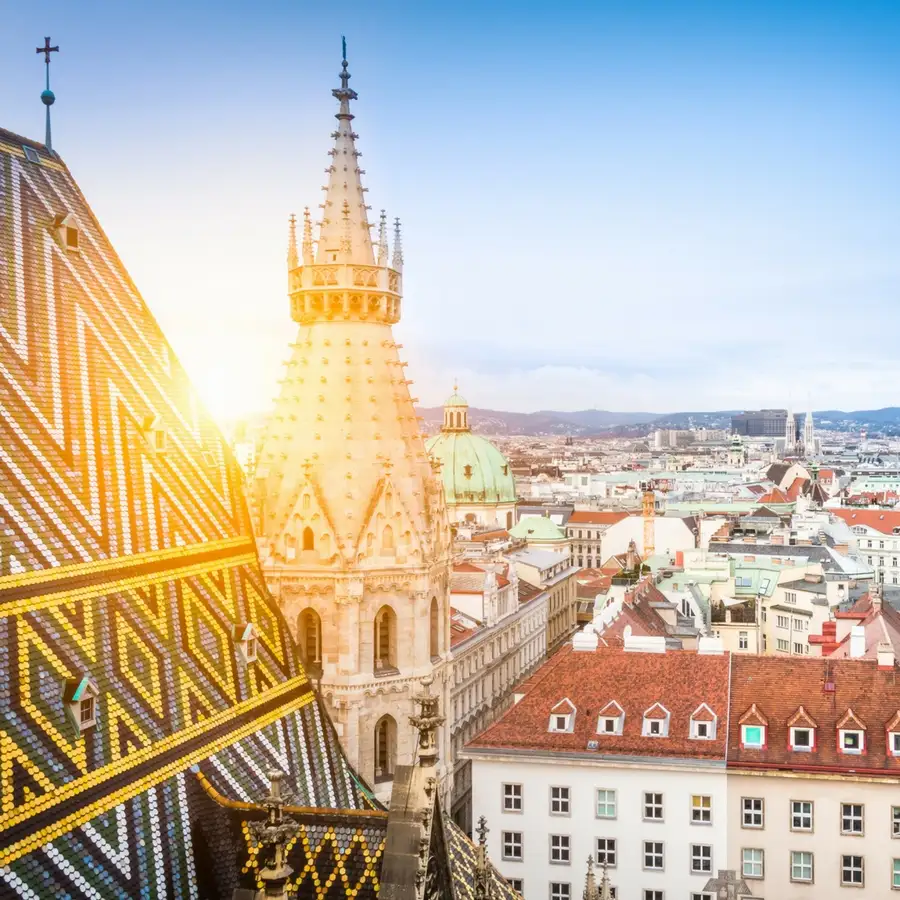
Day 11
Vienna
Day 11
Vienna




9:00 AM - 11:30 AM
Guided Walk of the Inner City
This tour takes you back in history to explore the Vienna that stood within the old city walls. You will learn about the humble beginnings of Vienna before it became the capital of a great empire and one of the most important cities in Europe. You will discover how Vienna's early inhabitants lived and how they left their mark on the city and its beautiful Medieval, Renaissance, and Baroque architecture.

Day 11
Vienna


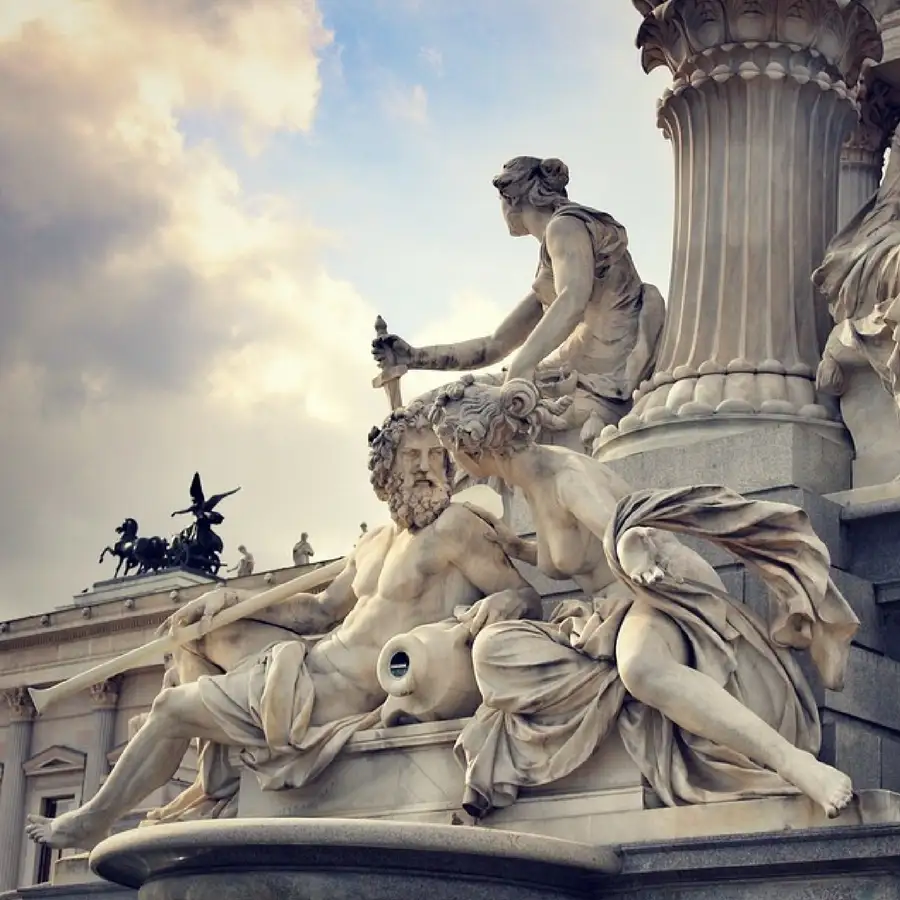
Day 12
Vienna
Day 12
Vienna



Morning/Mid-Day
Schönbrunn Palace
The magnificent Baroque palace of Schönbrunn is most famously associated with Empress Maria Theresa, who lived here surrounded by 16 little archdukes and duchesses who also happened to be her children. On your tour of the palace, you will see how Maria Theresa and other past imperial residents lived. No visit is complete without a stroll in the vast gardens surrounding the palace.

Schönbrunn Zoo
Join local families enjoying one of Europe's best zoos.
Show More

Schönbrunn Gardens
Get lost in the huge imperial gardens.
Show More

Schönbrunn Zoo
Join local families enjoying one of Europe's best zoos.
Show More

Schönbrunn Gardens
Get lost in the huge imperial gardens.
Show More

Schönbrunn Zoo
Join local families enjoying one of Europe's best zoos.
Show More

Schönbrunn Gardens
Get lost in the huge imperial gardens.
Show More
prev
next

Day 12
Vienna

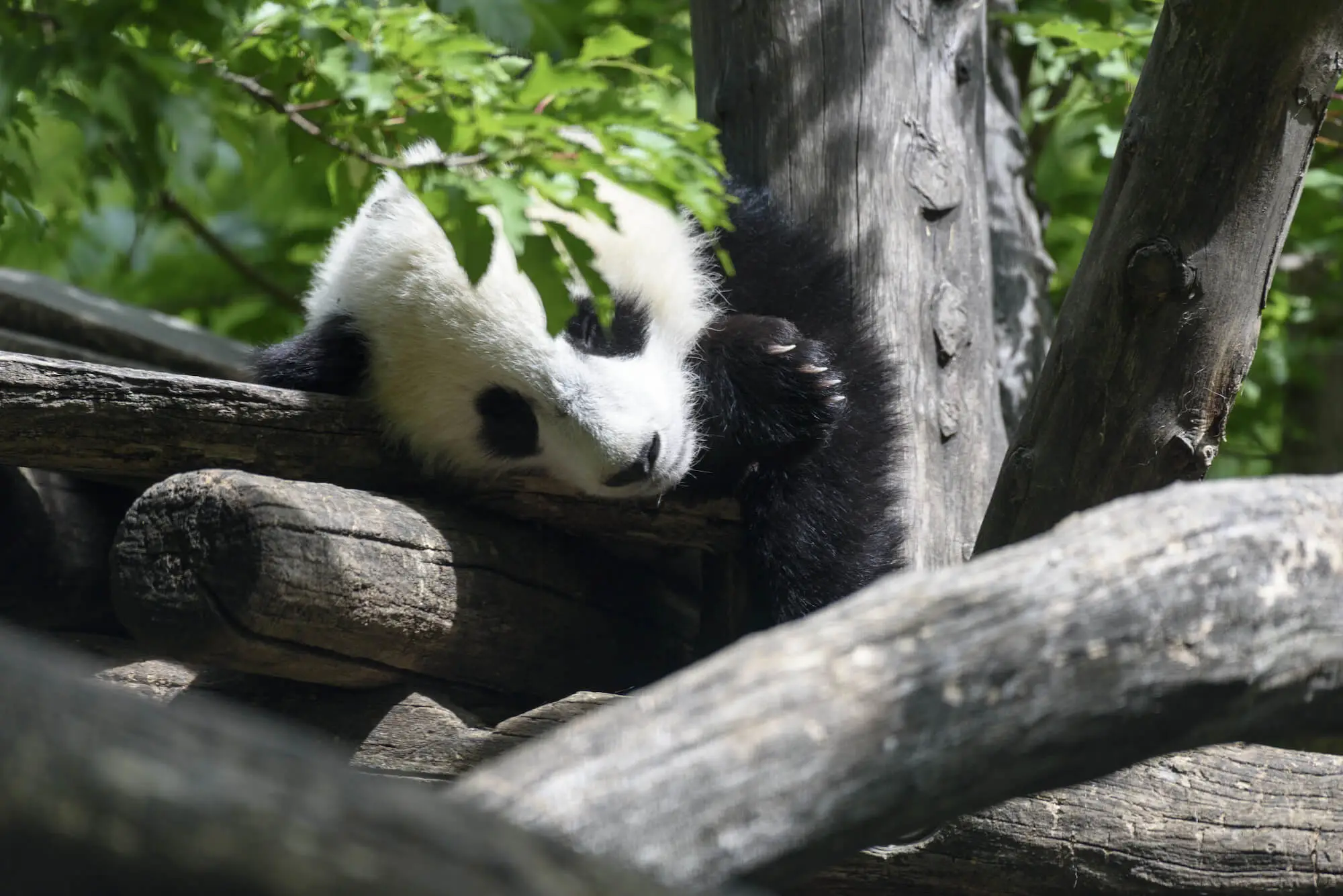
Schönbrunn Zoo
 Highlight of Schönbrunn Palace
Highlight of Schönbrunn PalaceJoin local families enjoying one of Europe's best zoos.
With an entrance directly connected to the Schönbrunn palace gardens, visiting the zoo can be a great addition to any trip to the palace. Founded as an imperial menagerie in 1752, it is the oldest continually operated zoo in the world, and today is home to many rare species such as giant pandas.
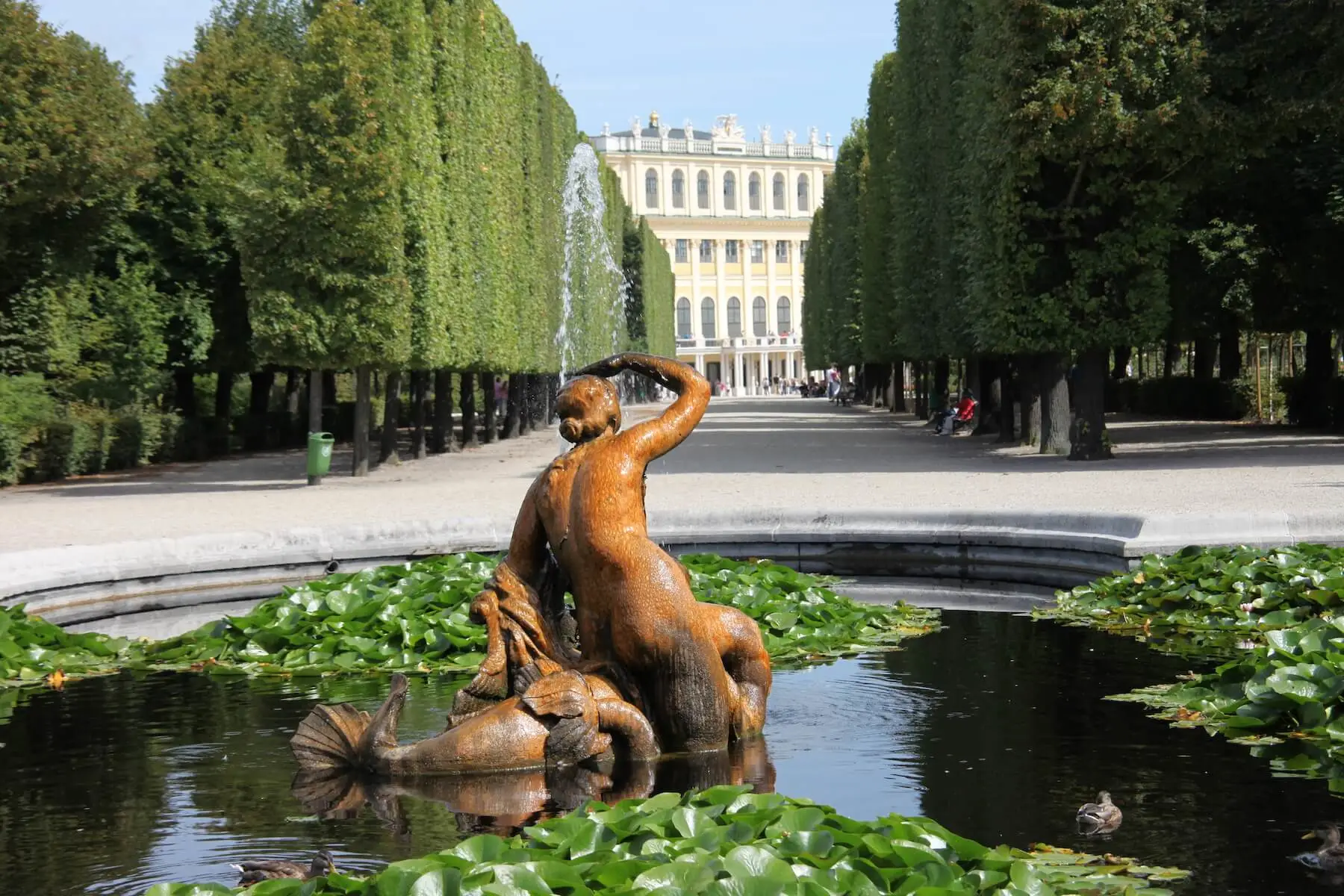
Schönbrunn Gardens
 Highlight of Schönbrunn Palace
Highlight of Schönbrunn PalaceGet lost in the huge imperial gardens.
The beautiful park is a mix of formal gardens and woodlands, and is dotted with enchanting statues & fountains, including a massive fountain of Neptune. The Gloriette pavilion sits on a rise opposite the palace and commands a wonderful view. Kids will love the labyrinth, racing to find the tower at the center of the maze.

Schönbrunn Zoo
 Highlight of Schönbrunn Palace
Highlight of Schönbrunn PalaceJoin local families enjoying one of Europe's best zoos.
With an entrance directly connected to the Schönbrunn palace gardens, visiting the zoo can be a great addition to any trip to the palace. Founded as an imperial menagerie in 1752, it is the oldest continually operated zoo in the world, and today is home to many rare species such as giant pandas.

Schönbrunn Gardens
 Highlight of Schönbrunn Palace
Highlight of Schönbrunn PalaceGet lost in the huge imperial gardens.
The beautiful park is a mix of formal gardens and woodlands, and is dotted with enchanting statues & fountains, including a massive fountain of Neptune. The Gloriette pavilion sits on a rise opposite the palace and commands a wonderful view. Kids will love the labyrinth, racing to find the tower at the center of the maze.

Schönbrunn Zoo
 Highlight of Schönbrunn Palace
Highlight of Schönbrunn PalaceJoin local families enjoying one of Europe's best zoos.
With an entrance directly connected to the Schönbrunn palace gardens, visiting the zoo can be a great addition to any trip to the palace. Founded as an imperial menagerie in 1752, it is the oldest continually operated zoo in the world, and today is home to many rare species such as giant pandas.

Schönbrunn Gardens
 Highlight of Schönbrunn Palace
Highlight of Schönbrunn PalaceGet lost in the huge imperial gardens.
The beautiful park is a mix of formal gardens and woodlands, and is dotted with enchanting statues & fountains, including a massive fountain of Neptune. The Gloriette pavilion sits on a rise opposite the palace and commands a wonderful view. Kids will love the labyrinth, racing to find the tower at the center of the maze.
prev
next


Day 13
Vienna
Day 13
Vienna


Early Morning to Late Afternoon
Wachau Valley
A one-and-a-half-hour train ride from Vienna brings you to the town of Melk, where you can tour the vast Melk Abbey. From there you can begin a 22-mile cruise through the Wachau Valley, considered the most beautiful stretch of the entire Danube River. You'll pass medieval castle ruins, hills covered in vineyards, and several charming villages, where you can debark to try some wine or take a hike up to a castle. The valley is also a perfect destination for cyclers and winery tours.

Dürnstein
Explore the twisting narrow lanes of this delightful monastery town.
Show More

Dürnstein Castle Ruins
Hike to the dramatic ruins of a medieval castle built in 1100's.
Show More

Melk Abbey
Tour a huge and splendid Baroque monastery.
Show More

Spitz
Stop to taste the wine in a postcard-pretty town surrounded by vineyards.
Show More

Dürnstein
Explore the twisting narrow lanes of this delightful monastery town.
Show More

Dürnstein Castle Ruins
Hike to the dramatic ruins of a medieval castle built in 1100's.
Show More

Melk Abbey
Tour a huge and splendid Baroque monastery.
Show More

Spitz
Stop to taste the wine in a postcard-pretty town surrounded by vineyards.
Show More
prev
next

Day 13
Vienna

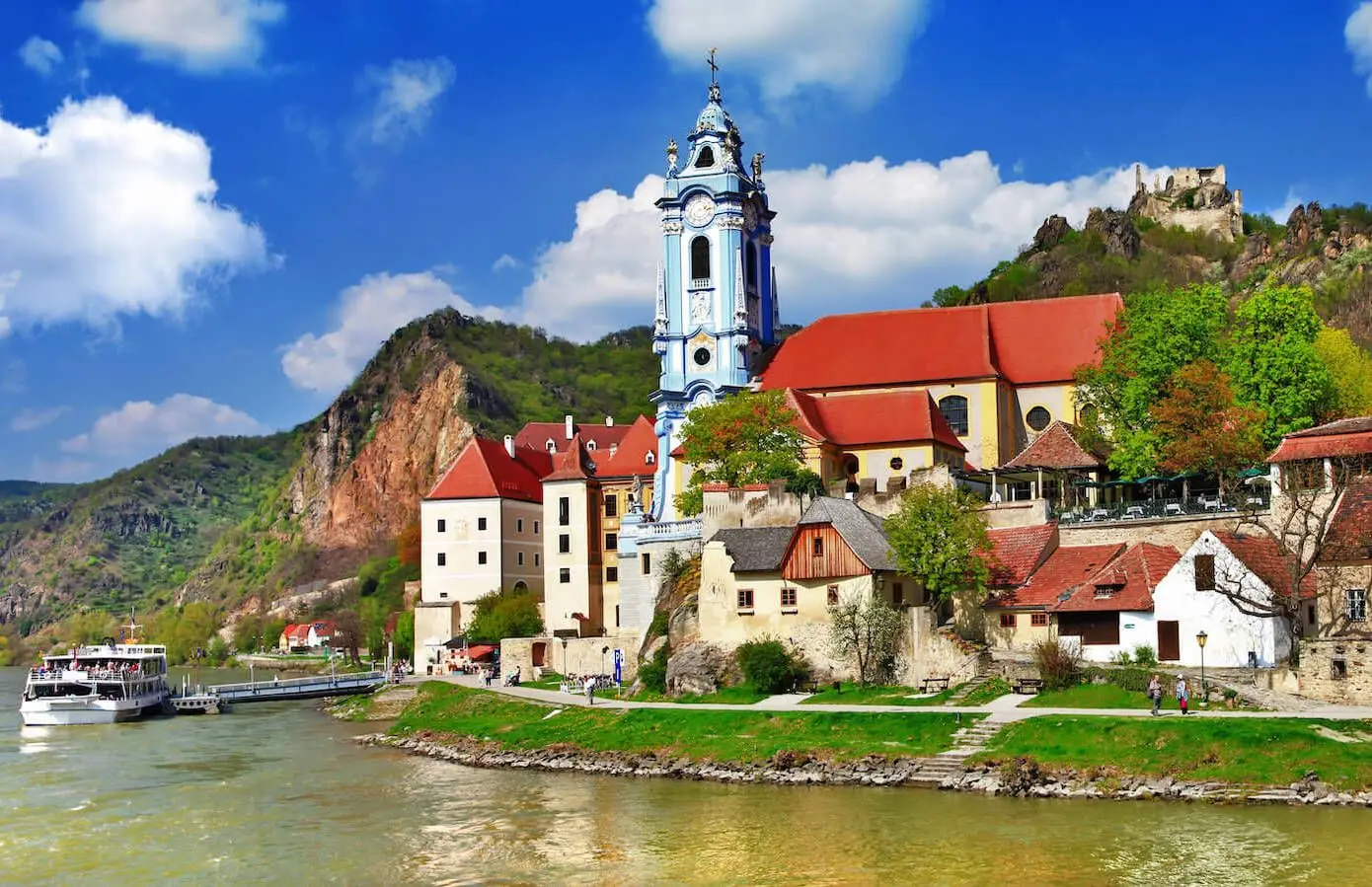
Dürnstein
 Highlight of Wachau Valley
Highlight of Wachau ValleyExplore the twisting narrow lanes of this delightful monastery town.
Named for the castle that overlooks it, Dürnstein is probably the most-visited stop in the Wachau valley. Reached by an ancient tunnel leading from the boat docks, it is well-known for its wine as well as the beautiful blue church tower of its Augustinian monastery.

Dürnstein Castle Ruins
 Highlight of Wachau Valley
Highlight of Wachau ValleyHike to the dramatic ruins of a medieval castle built in 1100's.
The hike leading to the castle is steep, but the amazing view you are rewarded with makes it all worth while. The fascinating ruins are extensive and can be freely explored. The castle was made famous by its most illustrious prisoner, King Richard the Lionhearted of England, who was held there for ransom.

Melk Abbey
 Highlight of Wachau Valley
Highlight of Wachau ValleyTour a huge and splendid Baroque monastery.
Founded in 1089 when the Austrian duke gave one of his castles to Benedictine monks, Melk Abbey is now both a place of pilgrimage and a major tourist attraction. Visitors come for the museum of religious artifacts, the jaw-dropping library, and the sublime church. The town square below the abbey is also a great place for a meal or wine.

Spitz
 Highlight of Wachau Valley
Highlight of Wachau ValleyStop to taste the wine in a postcard-pretty town surrounded by vineyards.
Spitz is a favorite stop due to its bucolic atmosphere and abundance of wine taverns and restaurants. It is also home to the Tausendeimerberg or "House of a Thousand Buckets" (so named for the abundance of wine fields) and the castle ruins of Hinterhaus, which make for a nice (if steep) hike from the village.

Dürnstein
 Highlight of Wachau Valley
Highlight of Wachau ValleyExplore the twisting narrow lanes of this delightful monastery town.
Named for the castle that overlooks it, Dürnstein is probably the most-visited stop in the Wachau valley. Reached by an ancient tunnel leading from the boat docks, it is well-known for its wine as well as the beautiful blue church tower of its Augustinian monastery.

Dürnstein Castle Ruins
 Highlight of Wachau Valley
Highlight of Wachau ValleyHike to the dramatic ruins of a medieval castle built in 1100's.
The hike leading to the castle is steep, but the amazing view you are rewarded with makes it all worth while. The fascinating ruins are extensive and can be freely explored. The castle was made famous by its most illustrious prisoner, King Richard the Lionhearted of England, who was held there for ransom.

Melk Abbey
 Highlight of Wachau Valley
Highlight of Wachau ValleyTour a huge and splendid Baroque monastery.
Founded in 1089 when the Austrian duke gave one of his castles to Benedictine monks, Melk Abbey is now both a place of pilgrimage and a major tourist attraction. Visitors come for the museum of religious artifacts, the jaw-dropping library, and the sublime church. The town square below the abbey is also a great place for a meal or wine.

Spitz
 Highlight of Wachau Valley
Highlight of Wachau ValleyStop to taste the wine in a postcard-pretty town surrounded by vineyards.
Spitz is a favorite stop due to its bucolic atmosphere and abundance of wine taverns and restaurants. It is also home to the Tausendeimerberg or "House of a Thousand Buckets" (so named for the abundance of wine fields) and the castle ruins of Hinterhaus, which make for a nice (if steep) hike from the village.
prev
next

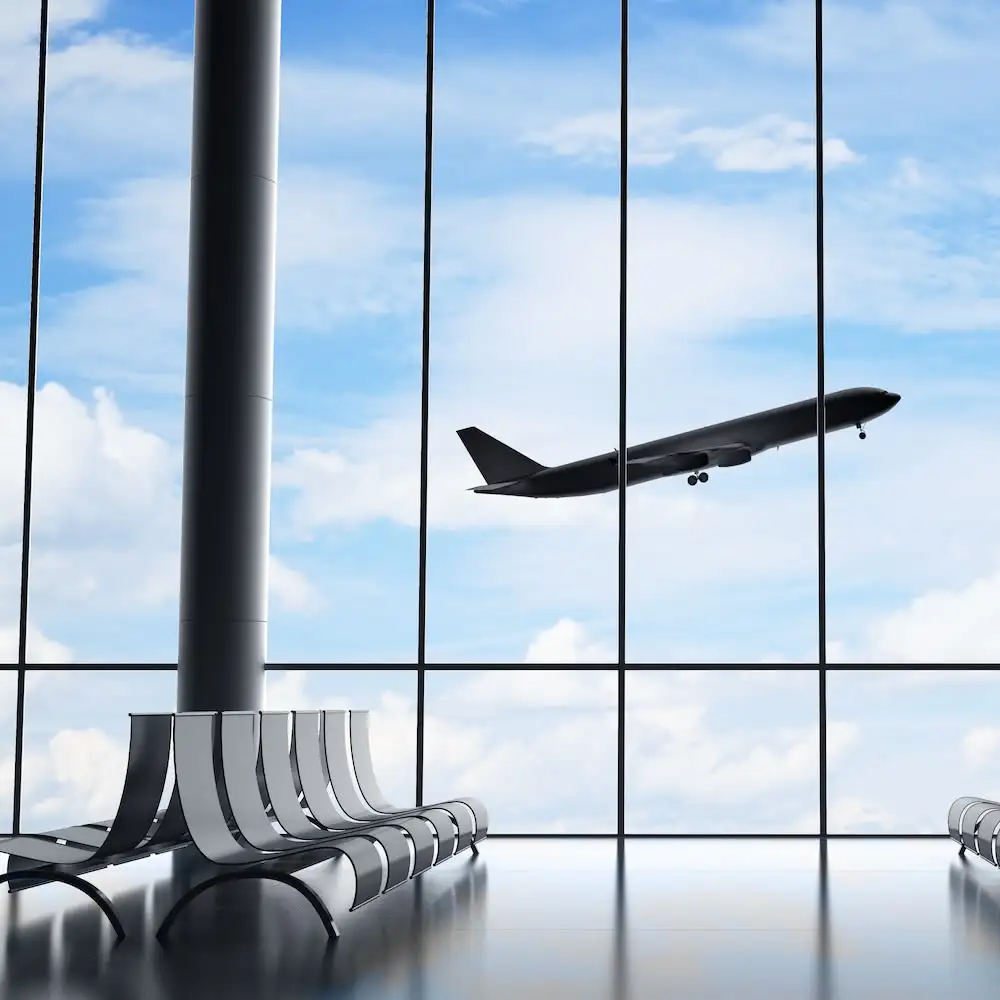
Day 14
Depart Vienna
Day 14
Depart Vienna

To Be Determined
Taxi Transfer to Vienna Airport
Vienna taxis are generally reliable and honest, so taking a taxi is cheaper than a pre-arranged transfer. Your hotel will be happy to arrange a pick up for you. If you are picked up three hours prior to departure, you should have plenty of time to catch your flight. If you are leaving during rush hour, you may want to budget an extra fifteen minutes or so.

Day 14
Depart Vienna


What's Included In Enchanting Family Alps Trip

Pre-Paid Tours and Activities:
- Private Introductory tour of the Zurich Old Town
- Guided Walk Tour of Historic Munich
- Guided Walking Tour of Salzburg
- Guided Walk through Vienna's Inner City
- City Card for Munich, including discounts to many popular attractions

Pre-Paid Transportation:
- 2nd Class Train Tickets from Interlaken to Zurich
- 2nd Class Train Tickets from Zurich to Munich
- 2nd Class Train Tickets from Munich to Salzburg
- 2nd Class Train Tickets from Salzburg to Vienna
- Public Transport Tickets for Munich and Vienna
- Swiss Travel Pass
- Private Transfer from the Zurich Airport

Accommodation:
- 2 nights at a hotel of your choice in Zurich
- 2 nights at a hotel of your choice in Interlaken
- 3 nights at a hotel of your choice in Munich
- 2 nights at a hotel of your choice in Salzburg
- 4 nights at a hotel of your choice in Vienna

Go Real Travel Mobile App:
- Itinerary Plan & Reservations Info
- Points of Interest
- Detailed Travel Information
- Maps & Directions
Other Trips You May Like

10 Days
From$3691USD
Peaks to Palaces: 10 Days in Switzerland, Germany, and Austria

Switzerland, Austria, Germany

14 Days
From$4249USD
Swiss Adventure with Germany & Italy: Lakes, Castles & Cultural Wonders

Germany, Switzerland, Italy

14 Days
From$4075USD
2-Weeks of Cultural, Gastronomic & Natural Wonders in Munich, Switzerland & Paris

Germany, Switzerland, France

9 Days
From$1598USD

21 Days
From$5199USD
Central European Journey through Switzerland, Germany, Austria and the Czech Republic

Switzerland, Germany, Austria, Czech Republic

10 Days
From$3725USD

14 Days
From$4250USD

7 Days
From$1498USD

14 Days
From$2897USD
14-Day Trip to Historic Munich, Salzburg, Vienna, and Prague

Germany, Austria, Czech Republic

10 Days
From$3691USD
Peaks to Palaces: 10 Days in Switzerland, Germany, and Austria

Switzerland, Austria, Germany

14 Days
From$4249USD
Swiss Adventure with Germany & Italy: Lakes, Castles & Cultural Wonders

Germany, Switzerland, Italy

14 Days
From$4075USD
2-Weeks of Cultural, Gastronomic & Natural Wonders in Munich, Switzerland & Paris

Germany, Switzerland, France

9 Days
From$1598USD

21 Days
From$5199USD
Central European Journey through Switzerland, Germany, Austria and the Czech Republic

Switzerland, Germany, Austria, Czech Republic

10 Days
From$3725USD

14 Days
From$4250USD

7 Days
From$1498USD

14 Days
From$2897USD
14-Day Trip to Historic Munich, Salzburg, Vienna, and Prague

Germany, Austria, Czech Republic
prev
next
Featured Blogs
prev
next
Our Customers Say It Best
Marianne Strydom, Paarl, South Africa
I just wanted to thank you for organizing an amazing trip for me – I packed in so much in such a short period of time and everything was just perfect. The way you do things makes it possible to really get to know the destination, which for me as a travel agent could not have been better. 

Otto Chuy, Los Angeles, California
I am still surprised how everything worked as planned, without a hitch. All instructions in your itinerary were precise and correct. Your suggestions and comments in each of the locations we went to were very helpful. All your guides, without exception, were wonderful and exactly on time. 

Malini Dutta, Boston, Massachusetts
We can't thank you enough for the detailed plans, maps, and suggestions. It really felt that someone was holding our hands and showing us around. We had all the excitement of discovering foreign lands, with none of the problems that can happen while negotiating unfamiliar places. In fact, all the cities felt like home within a few hours of arriving and exploring. 

Bev and Mark Frankel, Williamsburg, Virginia
We could not be more pleased with Go Real Travel! You took the guess work out of things like public transport but still managed to allow us the freedom to tour as we wanted. Our guides were exceptional and every time I saw a Viking Cruise tour of 25 people, I realized the quality experience we were getting with Go Real. 

Marianne Strydom, Paarl, South Africa
I just wanted to thank you for organizing an amazing trip for me – I packed in so much in such a short period of time and everything was just perfect. The way you do things makes it possible to really get to know the destination, which for me as a travel agent could not have been better. 

Otto Chuy, Los Angeles, California
I am still surprised how everything worked as planned, without a hitch. All instructions in your itinerary were precise and correct. Your suggestions and comments in each of the locations we went to were very helpful. All your guides, without exception, were wonderful and exactly on time. 

Malini Dutta, Boston, Massachusetts
We can't thank you enough for the detailed plans, maps, and suggestions. It really felt that someone was holding our hands and showing us around. We had all the excitement of discovering foreign lands, with none of the problems that can happen while negotiating unfamiliar places. In fact, all the cities felt like home within a few hours of arriving and exploring. 

Bev and Mark Frankel, Williamsburg, Virginia
We could not be more pleased with Go Real Travel! You took the guess work out of things like public transport but still managed to allow us the freedom to tour as we wanted. Our guides were exceptional and every time I saw a Viking Cruise tour of 25 people, I realized the quality experience we were getting with Go Real. 



Enchanting Family Alps Trip FAQ's
Is 14 days enough to see Zurich, Interlaken, Munich, Salzburg, and Vienna?
Yes, 14 days is a really good amount of time. You’ll spend two nights in Zurich, two in Interlaken, three in Munich, two in Salzburg, and four in Vienna. That’s long enough to enjoy the highlights of each place without feeling like you are rushing every day. Because hotels, train tickets, transfers, and guides are already arranged, you spend your time exploring instead of figuring out logistics.
Do I need to speak German to visit Switzerland, Germany, and Austria?
No. English is widely spoken in Switzerland, Germany, and Austria. The app provides all your instructions in English, so you’ll get by easily. A few local words like “danke” or “grüezi” are nice to know but not required.
What’s the best season for this trip?
For cities, the best weather is in May, June, September, and early October, though these are also the busiest months. July and August are hotter but often a bit quieter in the cities as locals leave for vacation. For Interlaken, higher mountain trails can still be snow-covered in April and early May, so late May through September is the best time for hiking. December is all about Christmas markets in Munich, Salzburg, and Vienna, combined with snowy Alpine scenery.
Do I get private guides, or is everything self-guided?
You get a balance of both. In Zurich, Munich, Salzburg, and Vienna, private guides lead the main walking tours, so you can set the pace and ask questions. In Interlaken and for certain excursions you’ll explore independently, but you’re not on your own — the Go Real Travel mobile app gives detailed step-by-step directions, maps, and insider tips so self-guided days feel stress-free.
How does train travel work on this trip?
Travel between cities is by train, and it’s smooth and scenic. Zurich to Interlaken is about two hours through the Swiss countryside, Munich to Salzburg is ninety minutes, and Salzburg to Vienna is a fast Railjet taking just over two hours. Your tickets are prepaid and stored in the app with train numbers and departure times. Platforms are only announced shortly before departure, but the app explains how to read the station boards so you can quickly find the right track.
Are public transport passes included?
Yes, and they make the trip much easier. In Switzerland you have the Swiss Travel Pass, which covers trains, buses, boats, and many mountain lifts. It allows you to move easily around Zurich and Interlaken and gives major discounts on famous mountain trips such as Mount Pilatus and the Jungfraujoch. In Munich, you have a city ticket that lets you use the U-Bahn, trams, and buses during your stay. In Vienna you also have a public transport ticket, so you can hop on trams and the U-Bahn whenever you like. Salzburg is compact and walkable, though if you want to use buses the app explains exactly how.
Is the Swiss Travel Pass really worth it?
Yes, and it is one of the most valuable inclusions in the trip. Buying all the Swiss trains, mountain lifts, and boats separately would cost hundreds of francs. With the pass, your intercity travel such as Zurich to Interlaken is included, city transport in Zurich is covered, and scenic boat rides are free. Mountain trips that are normally expensive, like the Jungfraujoch, come at a discount, while Mount Pilatus is heavily reduced as well. The pass saves serious money and gives freedom to be spontaneous in Switzerland because you can hop on trains or boats without worrying about extra tickets.
Is renting a car easier?
Not for this route. Trains connect city centers directly, with no parking stress or traffic. Zurich to Interlaken is more scenic by train than by car, Munich and Vienna are not car-friendly, and Salzburg’s old town is pedestrianized. With all tickets and passes provided, trains are far more convenient.
Is it stressful moving between so many cities?
Not at all. Every ticket and transfer is pre-arranged, and the app explains how to handle stations and connections. Even large stations like Zurich HB or Munich Hbf are easy to manage when you know how to read the departure boards, which the app shows you step by step. Hotels are always central, so you’re not stuck commuting across town with luggage.
What will I do in Zurich?
In Zurich you’ll explore the old town and lakeside with time for museums and walks, and then take a full-day guided trip to Lucerne and Mount Pilatus. With the Swiss Travel Pass, much of the journey is covered, and your guide makes sure the connections are seamless. You’ll ride a cogwheel train up Mount Pilatus and descend by cable car, which is a classic Swiss experience.
What will I do in Interlaken?
Interlaken is your base for a full Alpine experience. The itinerary includes a self-guided excursion to the Jungfraujoch, known as the “Top of Europe.” With your Swiss Travel Pass, you get discounted fares, and the app gives step-by-step instructions for each train and connection. Beyond that, you can use the pass for scenic boat rides on Lake Thun or Lake Brienz, or short train trips to villages like Lauterbrunnen or Grindelwald, all explained in your guidance.
What will I do in Munich?
In Munich you’ll have a private guided walking tour that covers Marienplatz, the Glockenspiel, Frauenkirche, Odeonsplatz, and Viktualienmarkt, along with entry to the Residence Palace. You’ll also have a city transport ticket to make it easy to explore further if you wish. Optional suggestions such as visiting Nymphenburg Palace or the English Garden are explained in the app.
What will I do in Salzburg?
In Salzburg you’ll have a private guided city tour that covers Mozart’s birthplace, the historic squares, and Salzburg Cathedral. The rest of your time is flexible, with the mobile app giving suggestions and directions for optional excursions like Hellbrunn Palace or a cable car up the Untersberg. Salzburg is compact and walkable, making it easy to enjoy at your own pace.
What will I do in Vienna?
In Vienna you’ll have a private guided city tour that introduces you to the Ringstrasse, Hofburg Palace, St. Stephen’s Cathedral, and other highlights. You also have a public transport pass, which makes getting around easy. The mobile app provides instructions for booking optional timed-entry visits to Schönbrunn Palace and the Austrian Parliament.
How much walking should I expect?
It's up to you, since you are traveling independently and not in a group. But if you try to fit in most of the recommendations in the itinerary, it can be quite a lot, usually more than 10,000 steps a day. Zurich’s old town is hilly, Munich and Salzburg are very walkable, and Vienna’s historic center is best explored on foot. For guided tours you can adjust the pace as they are a private tours, and you can always take a break or skip some attractions if you feel like cutting down on the walking. We also provide public transit directions so you can avoid walking when you like, but good shoes are still essential. In Switzerland, excursions like Jungfraujoch involve walking between trains and mountain stations, but the routes are straightforward.
How do I get from Zurich Airport to the hotel?
You don’t have to figure this out on your own. A private transfer is included on arrival, so you’re met in the arrivals hall and taken directly to your hotel. It’s a smooth start to the trip with no stress about train timetables or taxis after a long flight. However, if you would like to save on this cost, we can remove the private transfer and you can take a convenient direct rail connection from the airport to the city center.
How flexible is the trip? Can I swap out cities, for instance changing Salzburg for Budapest?
Yes, the trip is customizable. You can swap destinations, add extra nights, and add extra cities to the trip.
Do I need to pre-book Schönbrunn Palace?
Yes, Schönbrunn Palace uses timed-entry tickets that are not included automatically. The app has links and instructions for booking, so it is simple to do once you know your travel dates. Schönbrunn sometimes gets very crowded in busy months, so pre-booking is recommended.
What happens if I want to do more in Switzerland?
The Swiss Travel Pass makes this easy. Beyond the planned trips to Mount Pilatus and Jungfraujoch, you can hop on boats across Lake Lucerne or Lake Thun, take trains to mountain villages, or ride funiculars up to viewpoints, all without extra hassle. The mobile app has curated suggestions that fit neatly into your schedule.
What support do I have during the trip?
The mobile app is your day-to-day guide, storing your tickets, maps, and instructions. If you ever run into problems — like a missed train — you also have access to real support from Go Real Travel staff. You’re never left on your own.
Explore cities in more detail
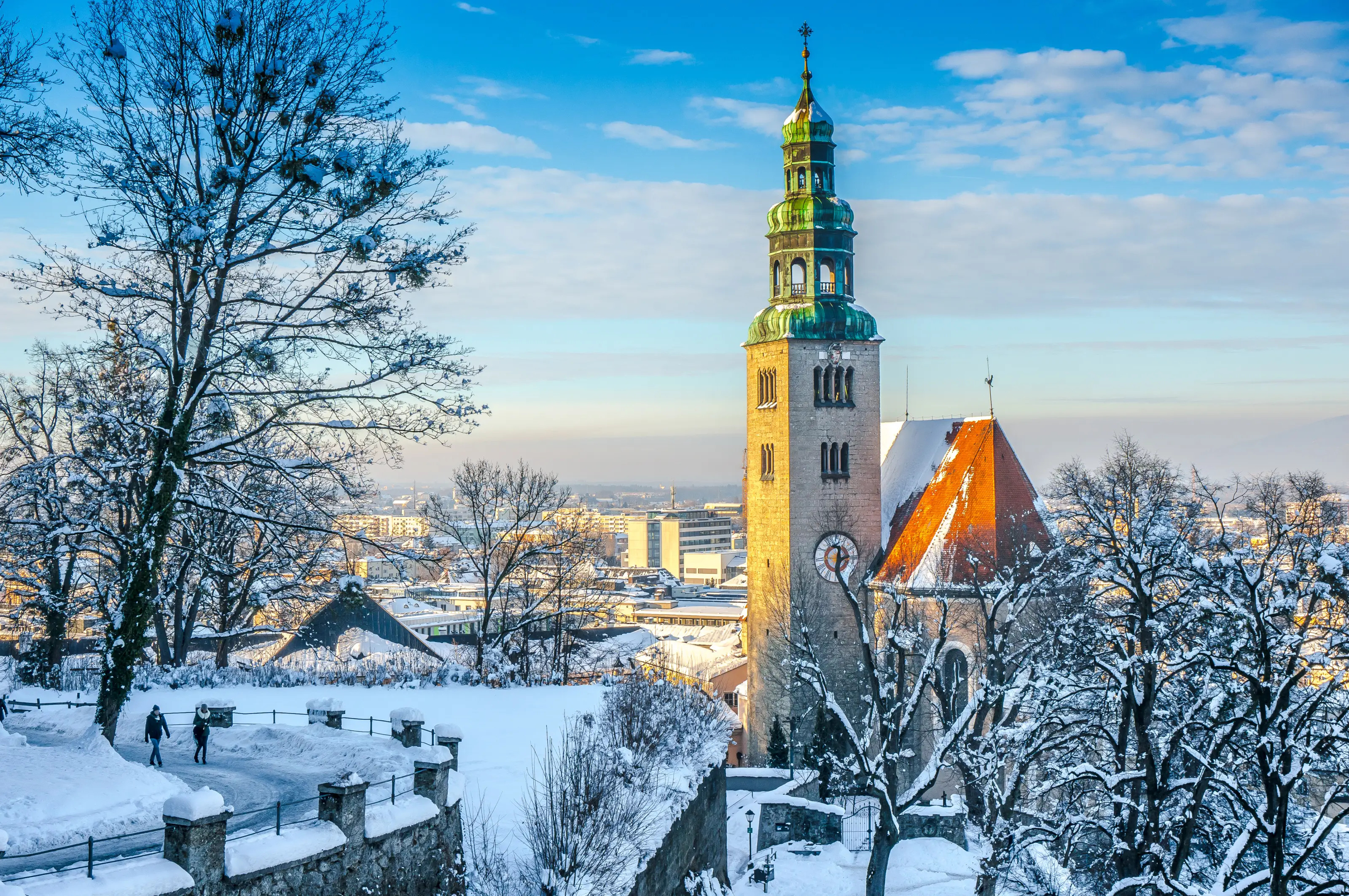
Salzburg
You've probably heard this before— the city of Salzburg is straight out of a fairytale. Nestled in the mountains, this romantic city's Baroque architecture with colorful domes and spires is especially striking against the ancient fortress and Austrian Alpine backdrop. If you're looking for an amazing view, climb up to Hohensalzburg Fortress, Central Europe's largest intact fortress, for a jaw-dropping panorama of the city backed by misty mountains. Perhaps most famous for being the birthplace of the renowned composer Wolfgang Amadeus Mozart and the filming location for the classic The Sound of Music, this city has much to offer. Salzburg has become an important artistic and cultural center, featuring magnificent concert halls that uphold the city's tradition of classical music every day of the year, as well as acclaimed art exhibitions and museums. If you do it right, your visit to Salzburg will immerse you in the city's unforgettable atmosphere and keep you coming back for more.

Learn About Salzburg
Build Salzburg Trip

Vienna
Artistic and musical, historical and elegant, Vienna is the definition of class. The seat of the Habsburg monarchy for over six centuries, it's no wonder this city is still fit for royalty. Baroque buildings and imperial palaces dominate the cityscape, while locals stride gracefully through the streets, likely on their way to a classical music concert or art exhibition. Visitors from all over the world flock to Schonbrunn Palace, historical museums, and local eateries for authentic Viennese schnitzel. Vienna is also home to world-class wining and dining. Famous dishes include Wiener schnitzel, Tafelspitz (prime boiled beef), and apfelstrudel (apple strudel), all of which pair well with a glass of fine Austrian wine. No matter how long you spend in Vienna, you'll leave with a new appreciation for the finer things in life.

Learn About Vienna
Build Vienna Trip
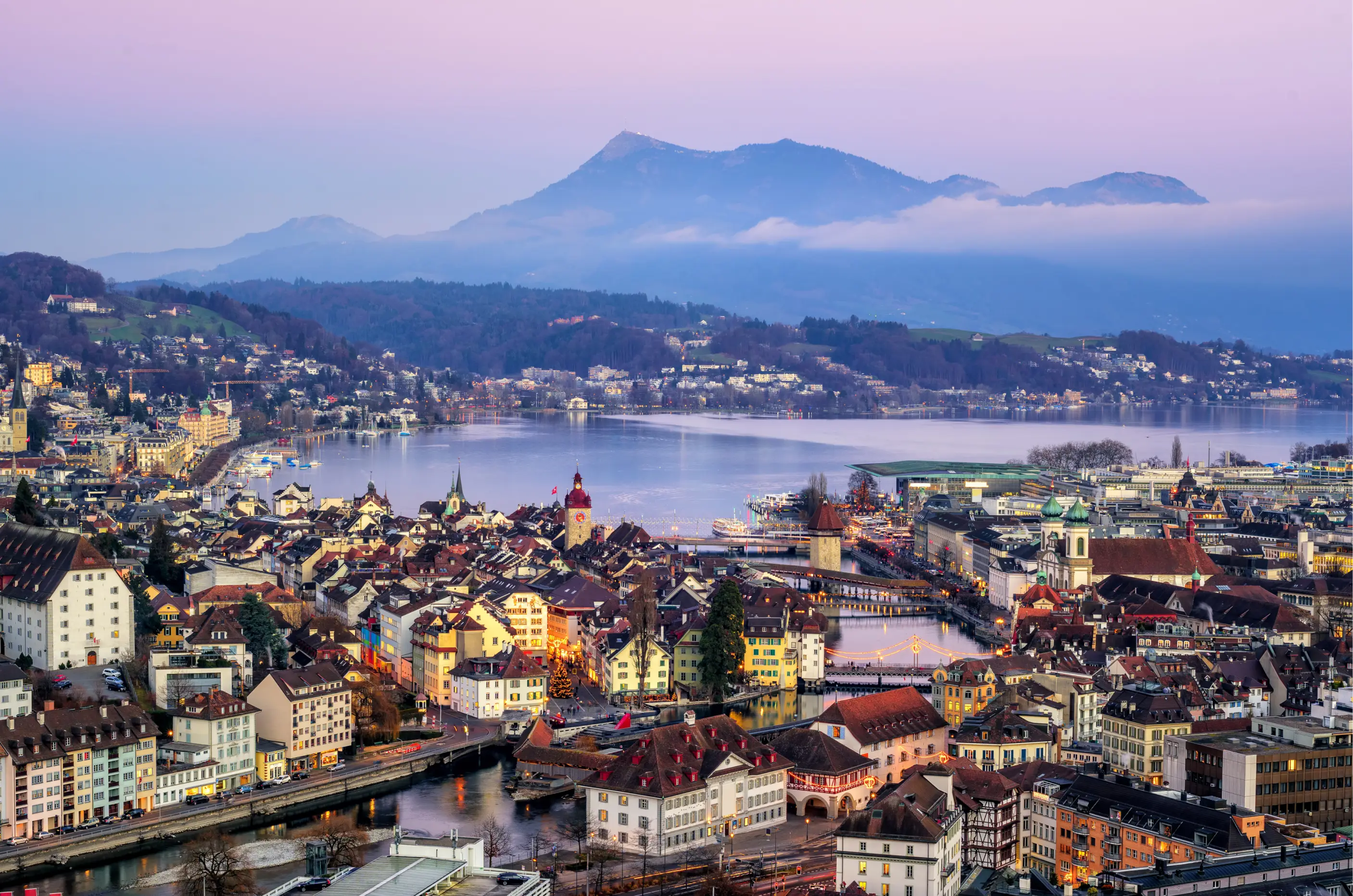
Lucerne
Lucerne’s international name may be French, but this spellbinding little city is actually situated in the heart of Switzerland’s German area. Lucerne was one of the first cities to join the Swiss Confederation and is a microcosm of all the typical Swiss quirks and charm that draw visitors to the country from all over the world. The city’s old town is beautifully preserved and also extremely compact. This is a place that is perfect for walking and looking. You’ll soon start to get an in-depth feel for the Old Town after just a few hours. Stroll across the famous Kapellbrücke bridge or the smaller Spreuerbrücke, or wander to the Löwendenkmal, the wounded lion memorial carved from a rock face. Stunning nature surrounds Lucerne, and the landmark Mount Pilatus towers over the city. It’s possible to climb the mountain, where hikers (and cable-car riders) will be rewarded with breathtaking views of the town below and the Alps beyond. Back at ground level, Lake Lucerne calls out for boat trips, which stop at the many villages and parks around the shores.

Learn About Lucerne
Build Lucerne Trip

Zurich
Zurich is Switzerland’s biggest city, located in the center of the country’s German-speaking region. It’s this location, superbly connected to almost everywhere else by train and close to an international airport, that makes Zurich an obvious destination for tourists. Well, that’s one of the reasons. There’s also the city’s bevy of bars and restaurants, the lakeside views, and stunning architecture around every corner.Take a stroll down the Bahnhofstrasse, a street known around the world for its unrivaled shopping. Weave through crowds of shoppers as you pass rows of world-famous and exclusive brands. Zurich is a small city, but that just makes it easier to get around. Lindenhof Hill, a slight rise of land in the center, offers views across all of the town. Among the city’s most striking features are the Grossmünster towers, which can also be climbed. This is a proud, sophisticated, and elegant city.

Learn About Zurich
Build Zurich Trip

Interlaken
Located between two bodies of water — Lake Brienz and Lake Thun — Interlaken is the perfect place to explore the serene natural beauty at Switzerland’s heart. Interlaken is a place for those who seek adventure amid spectacular natural surrounds. Rock climbing, canyoning, bungee jumping, and paragliding are just some of the ways to fill a day here, and countless backpackers descend on the town every summer to do all of these and more. Less intense, but no less rewarding, are the many opportunities for hiking, sailing, and swimming. Or, take to the rails. At the nearby Kleine Scheidegg pass, a train runs through the snowy Swiss Alps to the highest train station on the continent. The fun here doesn’t stop at night. After a hard day of adventure, backpackers flock to the town’s many pubs and bars to soothe their aches and pains with steins of beer. Interlaken is a place where fun and excitement reign supreme and somewhere to experience Switzerland’s striking nature in the most thrilling way.

Learn About Interlaken
Build Interlaken Trip
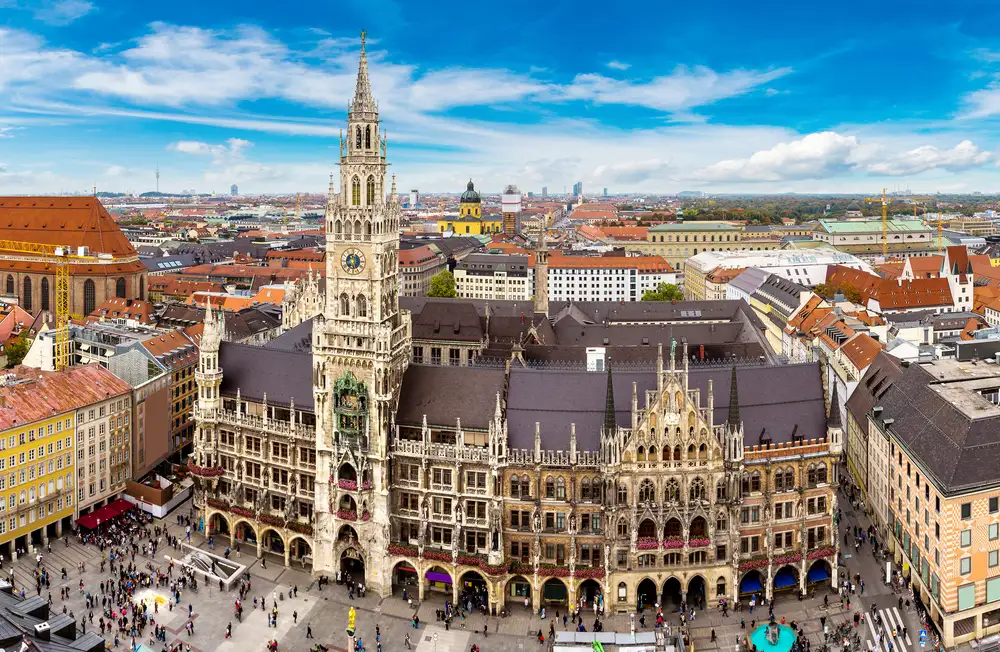
Munich
Arriving in Munich, you would be forgiven for thinking you were on the set of a movie about old Bavaria. At the Old Town beer halls, barmaids laced in dirndl dresses serve up frosty Helles lager, as oom-pah music drifts across the Marienplatz square. Men in lederhosen and checked shirts merrily give toasts as they knock glasses, or steins, as they’re known here. They sit at tables laden with wurst sausage and giant pretzels oozing with herby butter. This is Germany’s Germany, a place where folk traditions never stopped, and the revelry doesn’t either. Even when it isn’t Oktoberfest, the town’s notorious beer-drinking celebration, Munich is always happy to show you a good time. Simply cast your eyes around the lavish, gilded banquet hall at the Munich Residenz, the 13th-century Wittelsbach palace. You’ll see Munich has been impressing guests for centuries. Or, swing by the BMW Museum and check out the classic German cars. They even let you sit inside to test out the new models. At the city’s English Gardens, surfers ride waves on one of the park’s rivers. Munich is filled to the brim with this kind of pure-hearted German fun.

Learn About Munich
Build Munich Trip

Salzburg
You've probably heard this before— the city of Salzburg is straight out of a fairytale. Nestled in the mountains, this romantic city's Baroque architecture with colorful domes and spires is especially striking against the ancient fortress and Austrian Alpine backdrop. If you're looking for an amazing view, climb up to Hohensalzburg Fortress, Central Europe's largest intact fortress, for a jaw-dropping panorama of the city backed by misty mountains. Perhaps most famous for being the birthplace of the renowned composer Wolfgang Amadeus Mozart and the filming location for the classic The Sound of Music, this city has much to offer. Salzburg has become an important artistic and cultural center, featuring magnificent concert halls that uphold the city's tradition of classical music every day of the year, as well as acclaimed art exhibitions and museums. If you do it right, your visit to Salzburg will immerse you in the city's unforgettable atmosphere and keep you coming back for more.

Learn About Salzburg
Build Salzburg Trip

Vienna
Artistic and musical, historical and elegant, Vienna is the definition of class. The seat of the Habsburg monarchy for over six centuries, it's no wonder this city is still fit for royalty. Baroque buildings and imperial palaces dominate the cityscape, while locals stride gracefully through the streets, likely on their way to a classical music concert or art exhibition. Visitors from all over the world flock to Schonbrunn Palace, historical museums, and local eateries for authentic Viennese schnitzel. Vienna is also home to world-class wining and dining. Famous dishes include Wiener schnitzel, Tafelspitz (prime boiled beef), and apfelstrudel (apple strudel), all of which pair well with a glass of fine Austrian wine. No matter how long you spend in Vienna, you'll leave with a new appreciation for the finer things in life.

Learn About Vienna
Build Vienna Trip

Lucerne
Lucerne’s international name may be French, but this spellbinding little city is actually situated in the heart of Switzerland’s German area. Lucerne was one of the first cities to join the Swiss Confederation and is a microcosm of all the typical Swiss quirks and charm that draw visitors to the country from all over the world. The city’s old town is beautifully preserved and also extremely compact. This is a place that is perfect for walking and looking. You’ll soon start to get an in-depth feel for the Old Town after just a few hours. Stroll across the famous Kapellbrücke bridge or the smaller Spreuerbrücke, or wander to the Löwendenkmal, the wounded lion memorial carved from a rock face. Stunning nature surrounds Lucerne, and the landmark Mount Pilatus towers over the city. It’s possible to climb the mountain, where hikers (and cable-car riders) will be rewarded with breathtaking views of the town below and the Alps beyond. Back at ground level, Lake Lucerne calls out for boat trips, which stop at the many villages and parks around the shores.

Learn About Lucerne
Build Lucerne Trip

Zurich
Zurich is Switzerland’s biggest city, located in the center of the country’s German-speaking region. It’s this location, superbly connected to almost everywhere else by train and close to an international airport, that makes Zurich an obvious destination for tourists. Well, that’s one of the reasons. There’s also the city’s bevy of bars and restaurants, the lakeside views, and stunning architecture around every corner.Take a stroll down the Bahnhofstrasse, a street known around the world for its unrivaled shopping. Weave through crowds of shoppers as you pass rows of world-famous and exclusive brands. Zurich is a small city, but that just makes it easier to get around. Lindenhof Hill, a slight rise of land in the center, offers views across all of the town. Among the city’s most striking features are the Grossmünster towers, which can also be climbed. This is a proud, sophisticated, and elegant city.

Learn About Zurich
Build Zurich Trip

Interlaken
Located between two bodies of water — Lake Brienz and Lake Thun — Interlaken is the perfect place to explore the serene natural beauty at Switzerland’s heart. Interlaken is a place for those who seek adventure amid spectacular natural surrounds. Rock climbing, canyoning, bungee jumping, and paragliding are just some of the ways to fill a day here, and countless backpackers descend on the town every summer to do all of these and more. Less intense, but no less rewarding, are the many opportunities for hiking, sailing, and swimming. Or, take to the rails. At the nearby Kleine Scheidegg pass, a train runs through the snowy Swiss Alps to the highest train station on the continent. The fun here doesn’t stop at night. After a hard day of adventure, backpackers flock to the town’s many pubs and bars to soothe their aches and pains with steins of beer. Interlaken is a place where fun and excitement reign supreme and somewhere to experience Switzerland’s striking nature in the most thrilling way.

Learn About Interlaken
Build Interlaken Trip

Munich
Arriving in Munich, you would be forgiven for thinking you were on the set of a movie about old Bavaria. At the Old Town beer halls, barmaids laced in dirndl dresses serve up frosty Helles lager, as oom-pah music drifts across the Marienplatz square. Men in lederhosen and checked shirts merrily give toasts as they knock glasses, or steins, as they’re known here. They sit at tables laden with wurst sausage and giant pretzels oozing with herby butter. This is Germany’s Germany, a place where folk traditions never stopped, and the revelry doesn’t either. Even when it isn’t Oktoberfest, the town’s notorious beer-drinking celebration, Munich is always happy to show you a good time. Simply cast your eyes around the lavish, gilded banquet hall at the Munich Residenz, the 13th-century Wittelsbach palace. You’ll see Munich has been impressing guests for centuries. Or, swing by the BMW Museum and check out the classic German cars. They even let you sit inside to test out the new models. At the city’s English Gardens, surfers ride waves on one of the park’s rivers. Munich is filled to the brim with this kind of pure-hearted German fun.

Learn About Munich
Build Munich Trip
prev
next


 Map of Your Itinerary Route
Map of Your Itinerary Route
Zoom In to the cities to see your itinerary in more detail


 4.8
4.8 